Click on images to enlarge
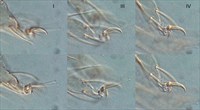
Fig. 1. Oligonychus punicae adult female syntype - detail of claws I, III, IV.

Fig. 2. Oligonychus punicae adult female syntype - detail of claws II and IV.

Fig. 3. Oligonychus punicae adult female syntype - detail of claws II, III, IV.
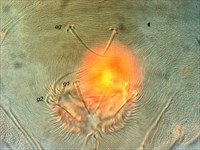
Fig. 4. Oligonychus punicae adult female syntype - detail of pattern of pregenital striae.
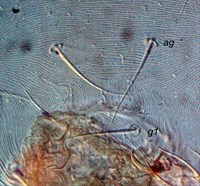
Fig. 5. Oligonychus punicae adult female syntype - detail of pattern of pregenital striae.
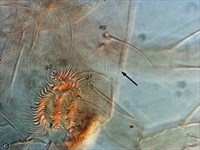
Fig. 6. Oligonychus punicae adult female syntype - detail of pattern of pregenital striae (specimen mounted laterally; arrow indicates section that is in focus).

Fig. 7. Oligonychus punicae adult female syntype - detail of pattern of dorsal striae between setae e1, f1,and f2.
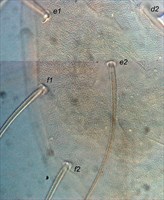
Fig. 8. Oligonychus punicae adult female syntype - detail of pattern of dorsal striae between setae e1, f1, f2 (specimen mounted laterally).
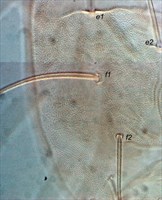
Fig. 9. Oligonychus punicae adult female syntype - detail of pattern of dorsal striae between setae e1, f1, f2 (specimen mounted laterally).

Fig. 10. Oligonychus punicae adult female syntype - detail of pattern of dorsal striae between setae e1 and f1.
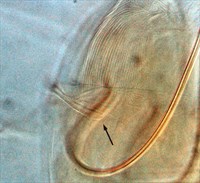
Fig. 11. Oligonychus punicae adult female syntype - detail of peritreme (arrow indicates tip).
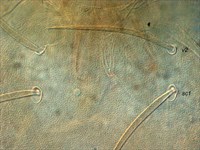
Fig. 12. Oligonychus punicae adult female syntype - detail of pattern of striae on prodorsum (same individual as Fig. 13).
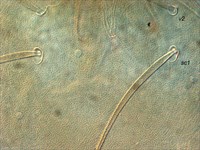
Fig. 13. Oligonychus punicae adult female syntype - detail of pattern of striae on prodorsum (same individual as Fig. 12).

Fig. 14. Oligonychus punicae adult male syntype - detail of claws I-IV.

Fig. 15. Oligonychus punicae adult male syntype - detail of claws I-IV.
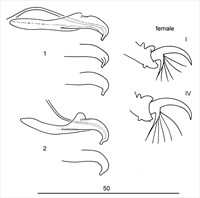
Fig. 16. Oligonychus punicae adult male syntypes - detail of aedeagus (at different focal points); and detail of female claws I and IV.
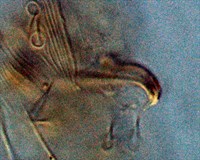
Fig. 17. Oligonychus punicae adult male syntype - detail of aedeagus. Same individual as number 2 in Fig. 16 and Fig. 19.

Fig. 18. Oligonychus punicae adult male syntype - detail of aedeagus (at different focal points). Same individual as number 1 in Fig. 16.

Fig. 19. Oligonychus punicae adult male syntype - detail of aedeagus (at different focal points). Same individual as number 2 in Fig. 16, and Fig. 17.
Material examined
types; non-types
Taxonomy
Subfamily Tetranychinae
Tribe Tetranychini
Common Name
none
Distribution
+Australia, Brazil, Chile, China, Colombia, Costa Rica, Cuba, Egypt, El Salvador, France, Guatemala, Honduras, *India, Mexico, Nicaragua, Panama, USA, Venezuela
Taxonomy Changes
Paratetranychus punicae Hirst 1926
Hirstiella punicae (Hirst) Zacher 1949
Oligonychus punicae (Hirst) Pritchard & Baker 1955
Paratetranychus coiti McGregor 1941, synonymy Pritchard & Baker 1955
Diagnosis
Female
- empodia I-IV stout strongly curved claw (Figs 1-3), about as long as proximoventral hairs (six pairs) [McGregor (1941) states empodial claw shorter than proximoventral hairs]
- ventral striae without lobes
- pregenital striae longitudinal (Figs 4-6)
- most dorsal striae transverse (Figs 7-9), except striae can be irregular between setae e1 and f1 (Fig. 10)
- dorsal setae f1 longer than f2
- peritreme ending in simple bulb with little or no expansion (Fig. 11)
- prodorsum with longitudinal striae, forming a broad U-shape posteriorly (Figs 12, 13)
- tarsus I with the sockets of three tactile setae and one solenidion proximal to the socket of the proximal duplex seta (with no setae overlapping) [some syntype females with three tactile setae and one solenidion proximal on one tarsus I, and four tactile setae and one solenidion proximal on the other tarsus I - but most individuals have three]
- tarsus II with the sockets of three tactile setae and one solenidion proximal to, and one tactile seta overlapping, the socket of the duplex seta
- chaetotaxy for legs I-IV:
- femora 8, 6, 2, 1
- genua 5, 5, 2, 2
- tibiae 8(1+0), 5, 5, 5
- tarsi 16(3+3), 15(2+3), 9(1+0), 9(1+0)
- pinkish, lateral opisthosoma and median area blotched with purplish-brown; older individuals may be blackish-brown; forelegs and palpi rusty pink, other legs pale; dorsal body setae strong and pale
- eggs with obvious dorsal stipe
Male
- empodium I short, stout curved claw, a little longer than (six pairs) proximoventral hairs (Figs 14, 15)
- empodia II-IV similar to female but slightly shorter (Figs 14, 15)
- peritreme ending in simple bulb with little or no expansion, as in female (Fig. 11)
- tarsus I with the sockets of three tactile setae and three solenidion proximal to, and one solenidion overlapping, the socket of the proximal duplex seta
- tarsus II same as the female
- chaetotaxy for legs I-IV:
- femora 8, 6, 2, 1
- genua 5, 5, 2, 2
- tibiae 11(4+0), 5, 5, 5
- tarsi 18(5+3), 15(2+3), 9(1+0), 9(1+0) [one male had 15(2) on one tarsus II and 16(2) on the other]
- aedeagus ventrally directed, one major bend; no anterior or posterior projection; distal portion of shaft bent ventrad and anteriorly in broad arc, forming an acute ventral angle; dorsal and ventral margins of shaft parallel to each other; ventrally directed portion abruptly tapering to form a short truncate finger-like tip (Figs 16-19)
- paler than female
Hosts
Approximately 20 recorded species of host plant, including: Camellia sp. (Theaceae), Coffea arabica (Rubiaceae), Eucalyptus sp. (Myrtaceae), Fragaria sp. (Rosaceae), Mangifera indica (Anacardiaceae), Musa sapientum (Musaceae), Persea americana (Lauraceae), Prunus persica (Rosaceae), *Punica granatum (Punicaceae), Rosa sp. (Rosaceae), Terminalia catappa (Combretaceae), *Vitis vinifera (Vitaceae)
Similar Taxa
Species recorded in Australia:
- Oligonychus coffeae (Nietner, 1861)
- Oligonychus ilicis (McGregor, 1917)
- Oligonychus mangiferus (Rahman & Sapra, 1940)
- Oligonychus ununguis (Jacobi, 1905)
Species not yet recorded in Australia:
- Oligonychus vitis Zaher & Shehata
Biology
Oligonychus punicae was first described from Coimbatore, South India, from the leaves of pomegranate and grapevine (Hirst 1926). This species sometimes infests grapevines and pomegranate in northern India, tropical Asia, Central and South America, causing brownish spots on the host's leaves.
Species of Oligonychus tend to feed on the upper surfaces of host leaves. This species is a pest of avocado in southern California. On avocado, infestations initially occur along the midrib, then spread to smaller veins of the leaves as the population grows. The areas along the midrib, and other feeding sites become brownish and are covered in white caste skins and hatched eggs. In California, populations remain active all winter, but as old avocado leaves drop during the flowering period, overwintering mites are lost.
In general, mite populations increase in early summer, peaking late summer, then peak again before winter. In summer, there may be 2 generations per month, but at a constant temperature of 25°C only 7 days is required to complete a generation (Jeppson et al. 1975).
References
+Davis, J.J. (1968f) Survey of Tetranychidae. Item 12 Qld. Dept. Agric.
*Hirst, S. (1926) Descriptions of new mites including four new species of "red spider". Proceedings of the Zoological Society of London: 825-841
McGregor, E.A. (1941) The avocado mites of California, a new species. Proceedings of the Entomological Society of Washington 43: 85-88
Migeon, A. and Dorkeld, F. (2006-2017) Spider Mites Web: a comprehensive database for the Tetranychidae. http://www.montpellier.inra.fr/CBGP/spmweb
Pritchard, A.E. and Baker, E.W. (1955) A revision of the spider mite family Tetranychidae. Pacific Coast Entomology Society Memoirs 2: 1-472
Zacher, F. (1949) Arachnoidea, Spinnentiere. Handbuch der Pflanzenkrankheiten. Begr. von Paul Sorauer, bd. 4: 139-207
Notes
Pritchard & Baker (1955) used the number of tactile setae on tibia and tarsus I to separate out five species groups in Oligonychus, including the ununguis group = aedeagus is ventrally directed; tibia I with 5-7 tactile setae; and tarsus I with 0-4 tactile setae proximal to the proximal duplex setae and 1 ventral tactile seta just distal to the duplex setae; empodium with 4-6 pairs of proximoventral hairs.
The remainder of the genus consists of species in which the aedeagus is dorsally directed; tibia I with 8-9 tactile setae; tarsus I with 2 ventral tactile setae overlapping or distal to duplex setae; empodium with 3 pairs of proximoventral hairs.
Most species in the Oligonychus ununguis species group (with aedeagus directed ventrally) are notoriously difficult to separate, with the females of several species being virtually impossible to separate.
Pritchard & Baker (1955) further divided the ununguis species group into subgroups: the boudreauxi, subnudus, aceris, bicolor, and ununguis subgroups. The species that have been recorded in Australia are all placed within three subgroups - subnudus subgroup (subnudus, pityinus, milleri, cunliffei), bicolor subgroup (bicolor, platani, ilicis, viridis, newcomeri, coffeae) or the ununguis subgroup (ununguis, coniferarum, yothersi, punicae, mangiferus, peronis). [n.b. that this list of species comes from P&B 1955, and there are many additional species now known in the ununguis-species group]
The Oligonychus ununguis species group bicolor subgroup have tarsus I with 3 tactile setae proximal to duplex setae; while the O. ununguis species group ununguis subgroup have tarsus I with 4 tactile setae proximal to duplex setae. However, an examination of the O. punicae types revealed that they have mostly 3 tactile setae proximal to the duplex setae (not 4), although a couple of individuals showed asymmetry with 3 on one side and 4 on the other. This would likely mean that there has been a great deal of misidentifications made over the last 60 years.
Further adding to the confusion is the range of variation presented in the literature:
number of proximal setae on tarsus I:
- tarsus I with bases of three-four tactile setae and one solenidion proximal to base of proximal duplex seta (Australian material examined)
- tarsus I with bases of two tactile setae and one solenidion proximal to base of proximal duplex seta (Gupta & Gupta 1994)
- tarsus I with bases of four tactile setae and one solenidion proximal to bases of proximal duplex seta (Meyer 1987; P&B 1955)
- tarsus II with bases of three-four tactile setae and one solenidion proximal to base of duplex seta (Australian material examined)
- tarsus II with bases of four tactile setae and one solenidion proximal to base of duplex seta (P&B 1955)
Most Australian specimens with ventrally directed aedeagus (variously previously identified as coffeae, ilicis, mangiferus, punicae) have three tactile setae proximal to the duplex setae on tarsus I. While those specimens previously identified as ununguis (and a small number of ununguis-group specimens from Eucalyptus sp.) have four proximal tactile setae on tarsus I.
Copyright © 2018. All rights reserved.